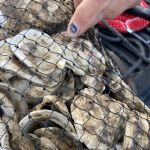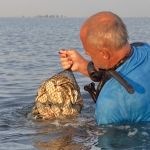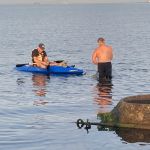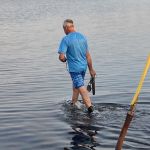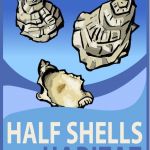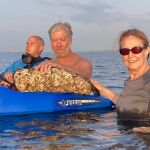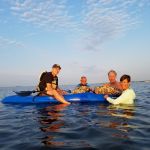Great South Bay Oyster Project
Photo Gallery
Recent Progress
Volunteer
Habitat Restoration

Habitat Restoration
We advocate for healing the creeks that feed our bay, for bay-friendly yards, for helping to return a shellfishing industry to the Great South Bay, and for the deployment of modern wastewater treatment technologies to address the problems caused by 500,000 cesspools and septic tanks, as well as the 197 large scale septic systems in malls, apartment complexes and locally.
Volunteer
Lend a hand! Join our Oyster Project Team and help revive The Great South Bay.
Partnering With Oyster Growers
Of course, nothing happens without cleaner water. That is why getting rid of our cesspools and septic tanks, healing our creeks, tackling runoff, and practicing natural lawn care is so important.
Please contact us with any suggestions you may have. You can also donate our efforts. We want to apply the latest techniques in aquaculture to revitalize our bay, our economy and our local culture.
We advocate for healing the creeks that feed our bay, for bay-friendly yards, for helping to return a shell fishing industry to the Great South Bay, and for the deployment of modern wastewater treatment technologies to address the problems caused by 500,000 cesspools and septic tanks, as well as the 197 large scale septic systems in malls, apartment complexes and locally.
Where You Can Get Fresh, Long Island Blue Point Oysters
- Neguntatogue Oysters (Lindenhurst) – call or text Keith & Nicole at 631-275-8046
- Blue Island Oysters (Sayville)- Call Chris at (631) 563-1330 for availability
- Maris Stella Oysters (Captree) – call or text Sixto at 516-939-5545
- Little A’s (Bay Shore) – call or text Michael at 917-526-1900
- Red Tiger (West Islip) – call or text Lou at 646-228-6273
The Making Of An Oyster Sanctuary
Site Evaluation
Establishing the Sanctuary
Enhancing and Measuring for Success
Recent Progress On Habitat Restoration
Shots Of Sandy Ravaging The Bellport Marina
The intrepid Michael Busch of Great South Bay Images (Facebook: GSB Images) unearthed these dramatic shots of Sandy as it hit Bellport Bay and the marina. The sheer force of the storm can be seen in every shot. Visit his site/FB page for higher res pics and prints....
National Geographic On The Breach / New Inlet — Sandy’s Silver Lining
Nice video on The New Inlet/ breach from National Geographic. Got some old time baymen featured. Good job! Nice end to a somber day. via National Geographic
Water Quality Issues in Long Island for Summer of 2013
Here is a map of water quality issues Summer of 2013 on Long Island.
“Long Island is All Clammed Up” – Is It Too Late For Our Bays?
It is important to remember that many of the land use issues discussed each week have real impacts to the lives of Long Islanders, and failure to heed economic and environmental warning signs can lead to real consequences. If we fail to protect our water system, the consequences will be dire.
In recent weeks, environmentalists, New York State government leaders, News 12 Long Island and others have been working on a public campaign to increase public awareness about Long Island’s drinking and surface waters. Failing to protect the aquifer is costly on a variety of fronts. With the recent call for state intervention, and the return of brown tide on the South Shore, it’s critical that action is taken sooner rather than later.
Long Island’s Ground Water Pollution Problem — How Nitrogenous Waste From Septic Tanks, Fertilizers, and Poorly Treated Water Is Sparking Potent Algae Blooms in Our Bays And Choking Off Life
A global expert on algal blooms and nitrogenous waste, Prof. Gobler has been tireless in getting his message out to all Long Islanders and to the country — we have a very serious problem with polluted ground water, and it is triggering algal blooms — brown tide, rust tide, red tide, blue-green algae — and wiping out marine and fresh water habitats. As a part of The Long Island Clean Water Partnership (please sign up and help out!), a group of some 125+ organizations seeking to build a sustainable Long Island, SCERP (The Stony Brook Coastal and Estuarine Research Project) is contributing some of the basic scientific research that is helping us to identify our water problems and to develop the solutions.
From SCERP: DAMAGING BROWN TIDE RE-EMERGES ACROSS ENTIRE SOUTH SHORE OF LONG ISLAND — Tell Our Politicians via Facebook!
This is so discouraging. The brown tide has come back with a vengeance. It is widespread (except at the inlets, the New Inlet included), and the longer it lasts, the more damage it will do to habitats and to shell fish and fin fish. This new algal bloom just underlines the fact that if we don’t start to address immediately how our septic tanks, antiquated sewer systems, and lawn and agricultural fertilizer are fueling these algal blooms by loading the groundwater with nitrogen, our bay, and all our bays will die.

